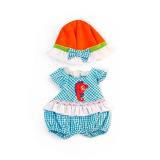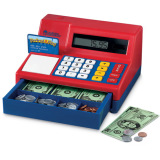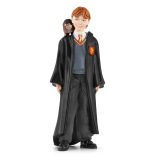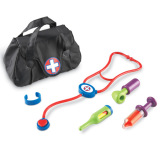
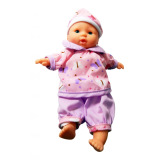
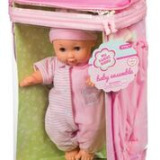
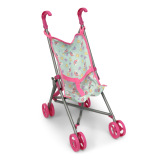
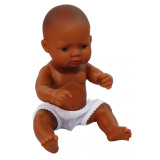
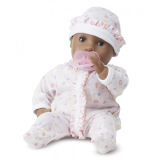
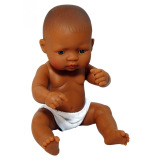
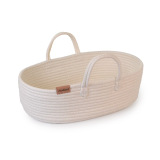
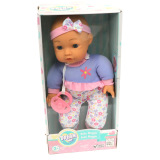
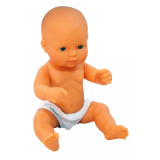
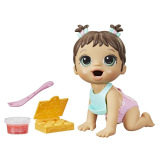
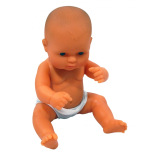
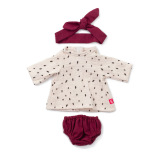
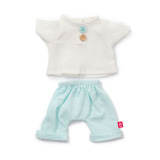
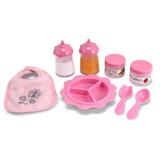
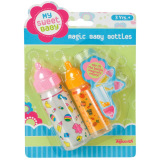
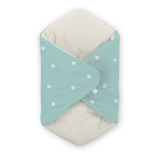
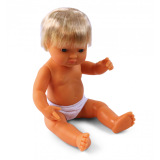
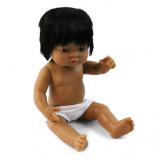
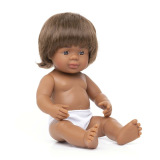
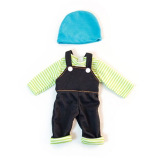
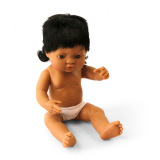
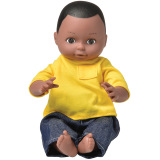
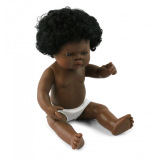
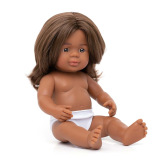
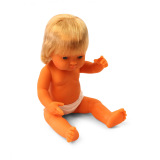
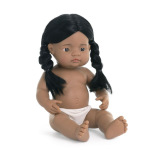
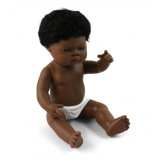
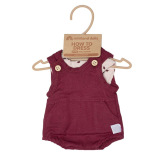
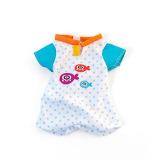
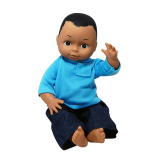
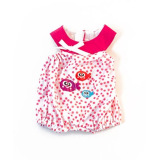
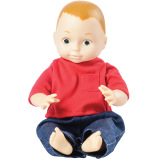
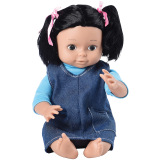
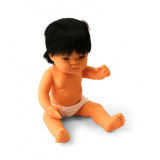
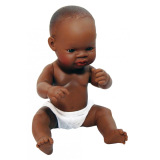
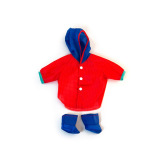
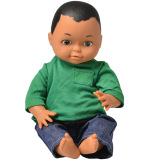
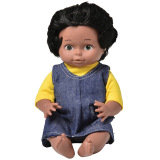
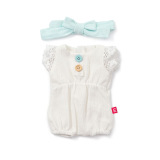
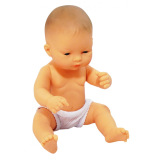
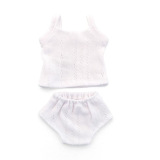
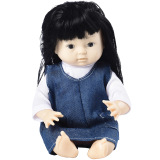
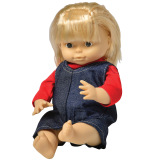
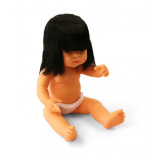
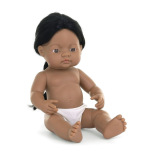
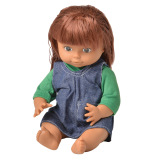
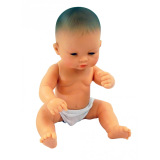
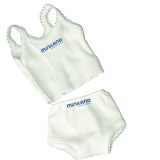
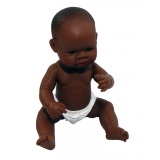
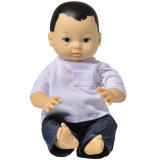
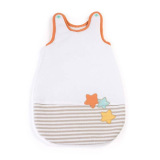
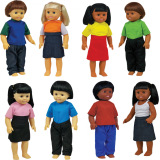
Baby dolls and accessories play an important role in every playroom or therapy setting. Toddlers and children often engage in pretend play with the doll such as “house” or “parenting,” which allows them to experiment with empathy, care, and responsibility. Many children naturally enjoy nurturing dolls, while others may use dolls to communicate needs or re-enact real-life situations during sessions.
Accessories such as bottles, blankets, and clothing deepen the role-play experience and allow children to demonstrate their understanding of family roles and routines. In therapy, a child may even hand the baby to the therapist to “take care of,” showing trust as the therapeutic relationship grows.
Having a diverse selection of play therapy dolls with different ethnicities and skin tones ensures that children see themselves represented in your playroom. Representation supports belonging and validation, especially for children navigating identity or cultural differences.
Anatomically correct dolls can be especially valuable tools, they can help facilitate age-appropriate discussions about preventing abuse, body awareness, appropriate touch, and personal safety. These dolls can also support trauma-informed work and body parts identification in therapy.
At Play Therapy Supply, we offer a wide selection of baby dolls and accessories that fit your practice, budget, and space. Build a collection that encourages empathy, comfort, and emotional growth: essential elements in every play therapy environment.
Baby Dolls by Use
- Nurturing Play: Dolls like "Mini Baby" for caregiving practice.
- Role-Play Accessories: Bottles and blankets (e.g., "Cotton Doll Basket") for family scenarios.
- Therapeutic Tools: Anatomically correct dolls for safety discussions.
- Diversity Options: Multi-ethnic dolls (e.g., "Girl Doll - Asian") for representation.
Frequently Asked Questions
Are baby dolls useful in play therapy?
Yes, they help children express emotions, practice nurturing, and process experiences in a safe way.
Should I include anatomically correct dolls in my playroom?
Yes, many therapists use anatomically correct dolls to teach appropriate touch, support trauma recovery, and help children identify body parts in a healthy, factual way.
How can I make my doll collection more inclusive?
Offer dolls representing a range of ethnicities, body types, and abilities to ensure all children feel seen and validated during play.
How do baby dolls support trauma work?
Dolls allow kids to re-enact or resolve trauma, while anatomically correct versions can also aid body awareness and safety talks
What accessories should I keep in my playroom?
Add baby bottles, blankets, and clothing items to add even more play possibilities, enhance role-playing, and add therapeutic depth.








